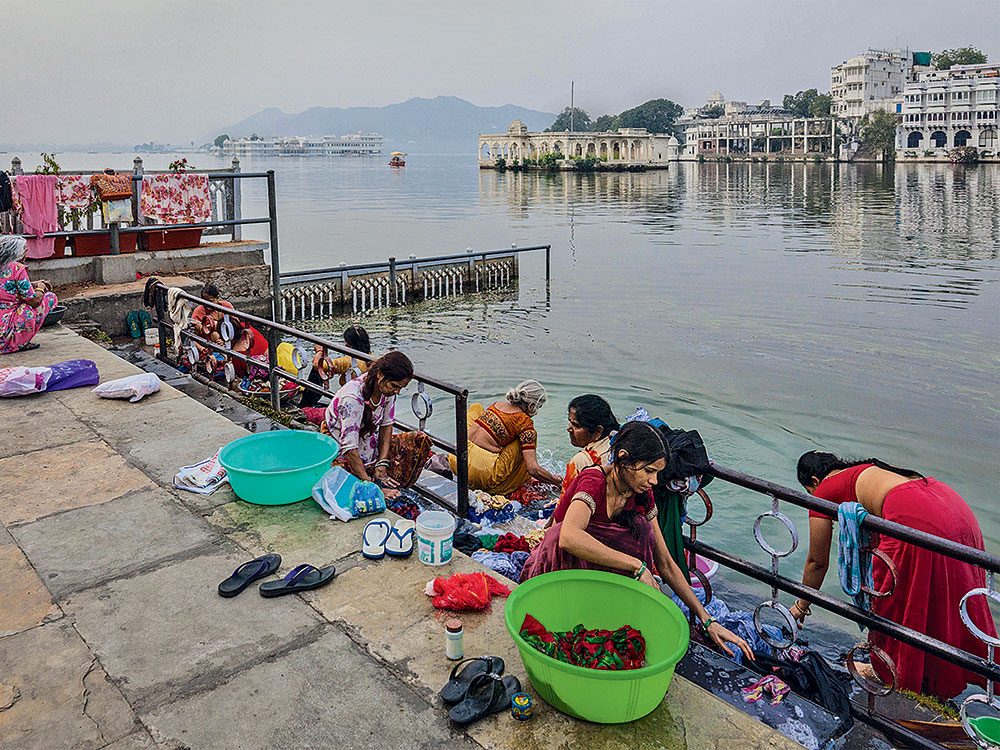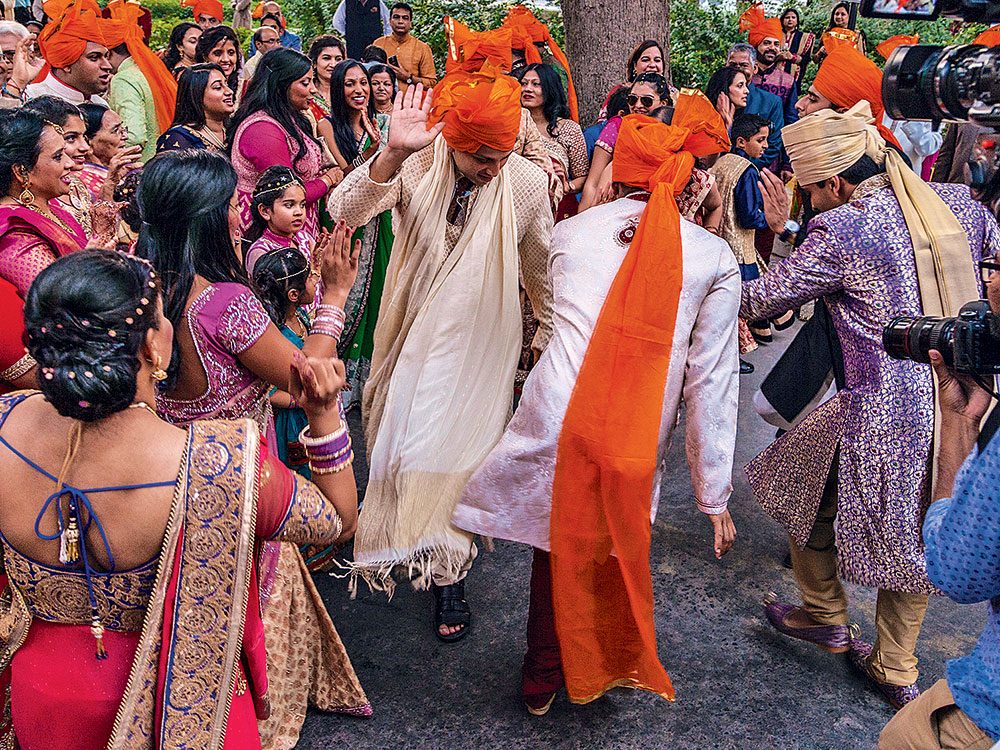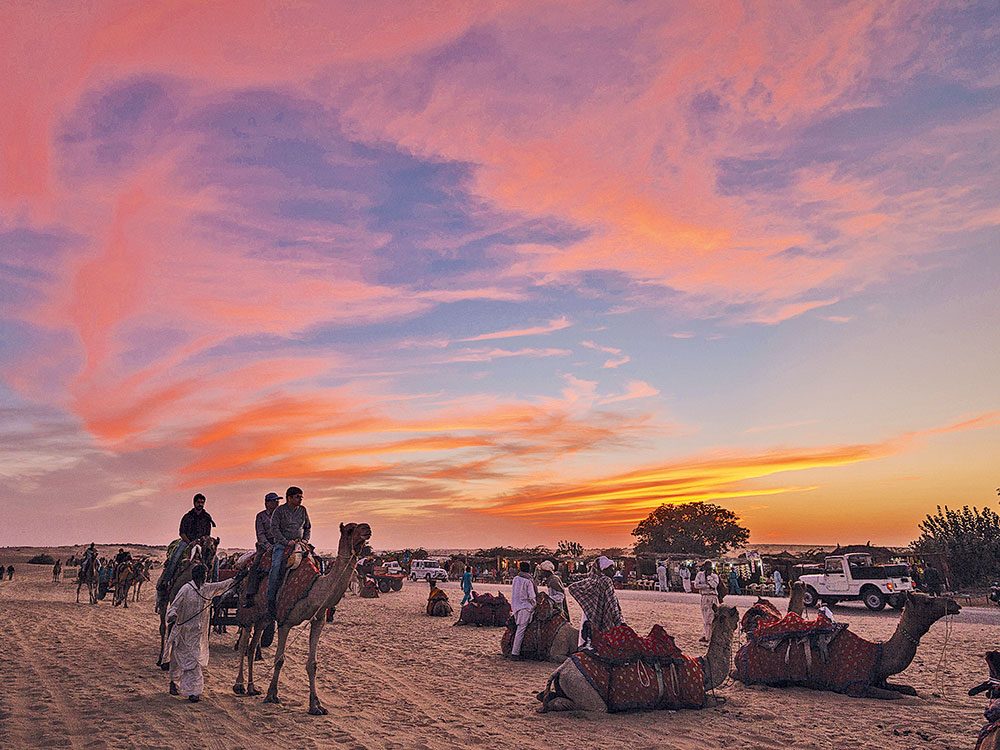
Taking a Trip to India—and Finding My Roots
Mention you are going to India, and chances are you will be told, “You must see the Taj Mahal.” This historic landmark has been photographed time and time again, but as I learned firsthand, India has much more to offer. It’s a photographer’s paradise! (Check out these helpful hints for Canadians travelling to India for the first time.)
The hustle and bustle of life on the Indian subcontinent caught my attention when I first arrived. Life goes on at an alarming, hectic pace on the densely populated streets. People rush around to make a living. Survival is for the fittest and this is a place where even seasoned photographers are challenged to grab pictures on the run.
One scene that is always visible is a cow leisurely walking among the people or resting in the middle of a busy street. Considered sacred, cows have the right of way and no attempts will be made to shoo them off. Instead, the cars, three-wheelers, scooters and pedestrians will simply bypass the sacred cow, the local people not concerned in the least that the cow is causing a traffic jam.

Culture Clash
While in India, I had to make a complete U-turn from my Catholic upbringing to follow the Hindu way. Being “westernized” by living in Canada, it was not easy to make the change, but I was determined to adapt during my time in India. Just in case you are wondering about my origins at this point, allow me to put things in perspective. My parents immigrated to Kenya from India, specifically from Goa, south of Mumbai. Goa was a Portuguese colony for more than 400 years, and my ancestors were converted to Christianity; as a result, subsequent generations lost their Hindu roots. The migration path continued for my immediate family, as my younger brother and I immigrated to Canada, while one sister and a brother went to the United States, and my youngest sister moved to England.
The idea of visiting India came about when Ramen Khare, my son’s mother-in-law, a Hindu woman, convinced me to travel to India with her. She said, “Since you don’t speak Hindi, you will be more comfortable with me. I will do all the talking on your behalf. We will not be travelling often in large cities, but in small towns and villages where my relatives are.” She added, “You can take all the pictures you want to your heart’s content. No one will object.”
One of my first challenges in India was to become a vegetarian and eat using my right hand. At first, the food stuck to my hand and although most of it landed in my mouth, some dripped on to my chin. No one at the table made funny remarks, and I eventually mastered eating with my right hand. Actually, I was respect all the way for making an effort to recover my Hindu roots.
These 10 rude manners are actually polite in other countries!

The Colours of Rajasthan
Raman told me that whenever I wanted to talk to someone in the street when she was not with me, I should introduce myself by joining my hands and saying, “Om Shanti.” (Peace). She told me that most of the youth speak English, and that people in the streets would be helpful after they discovered that I was a foreigner—even though I look like a native resident.
My favourite place was Rajasthan, simply because it was ablaze with colour. Women dressed in stunning saris and homes painted in vibrant colours with themes relating to the people’s faith, are a delight for tourists, especially those who like to take photos.
Using transportation in India was frightening. When you sit in a jam-packed three-wheeler, it’s best to say a prayer that you will arrive at your destination in one piece. The first time I used a three-wheeler, my leg was protruding out into the street. Using improvised sign language, I managed to inform the driver, who was already racing down the street, about my predicament. Without the least concern, he said, “Chalta hai.” I assumed that meant, “God will take care.” Later, I learned he was saying, “Don’t worry. It’s okay.”
India’s one-time royal families are opening the doors of the past to travellers!

A Photographer’s Paradise
In addition to snapping photos, one other thing I loved to do in India was drink chai. It is tea that is prepared by adding boiling milk and certain spices, and is best when drunk hot. It is very soothing and relaxing, and is offered quite often. If you are bargaining over the price of a sari or shirt in a shop, for example, chai will mysteriously arrive to give the bargaining process a friendly touch. You don’t buy any item in India without bargaining. Raman is an expert in the art of bargaining. When she discovered that I had purchased a shirt, she was upset. She said that I had paid double the price because the shopkeeper discovered I was a foreigner. After that, anything I needed to purchase, she bargained for it.
We travelled from New Delhi right across the land by train, stopping on the way to visit Raman’s relatives. The final stop was at the Thar Desert near the Pakistan/India border,which offered a complete change of scenery. People flock here to walk on the sand dunes and see the magnificent sunsets.
My journey to India was an experience I will never forget. Raman stayed behind for a longer period, promising me that she would teach me how to make chai on her return. India is a totally different world far removed from the west. Before boarding the plane for Montreal, I turned round facing the city, joined my hands and said, “Om Shanti,” to the people of India.
We’ve rounded up the eight most beautiful proverbs from around the world!